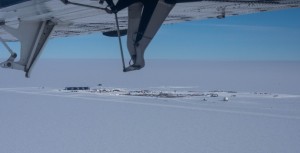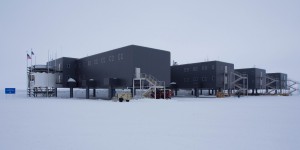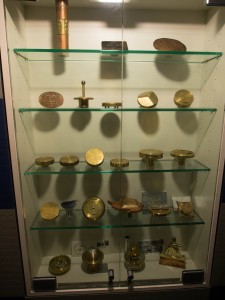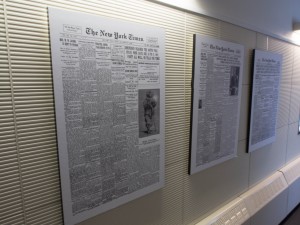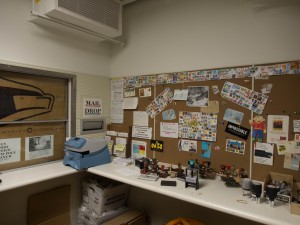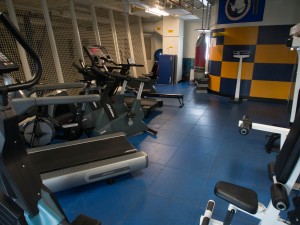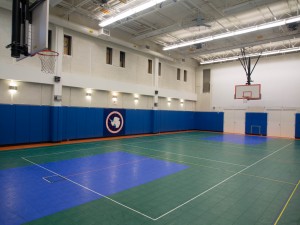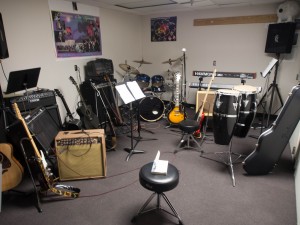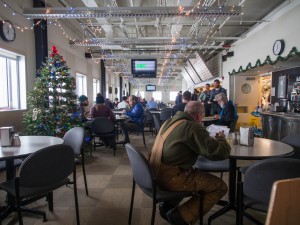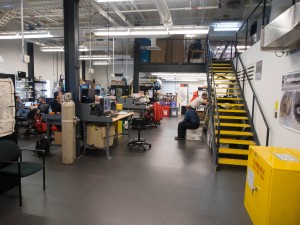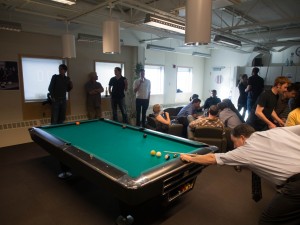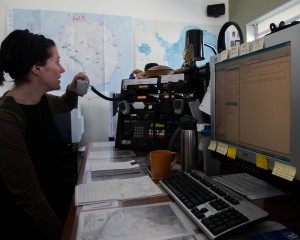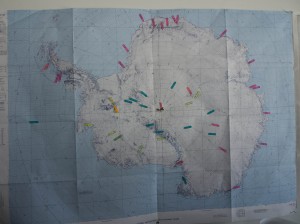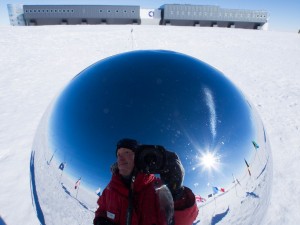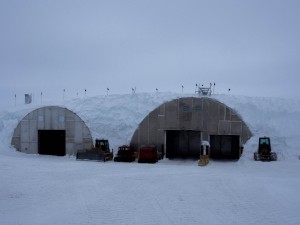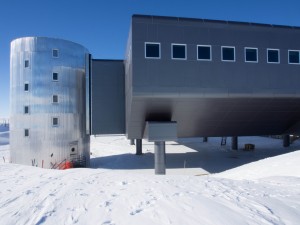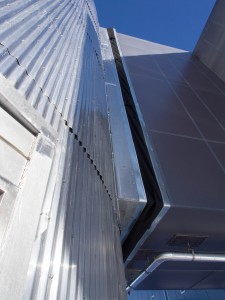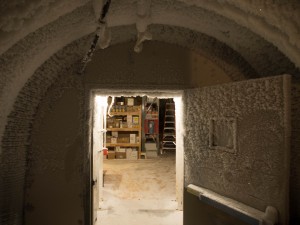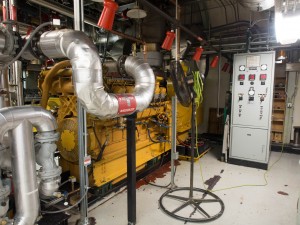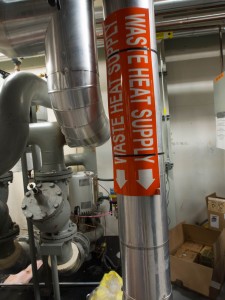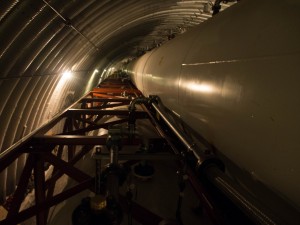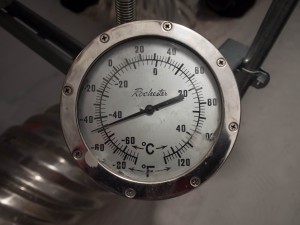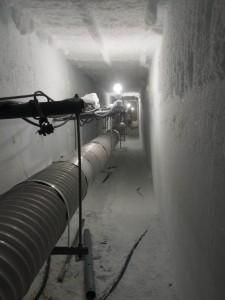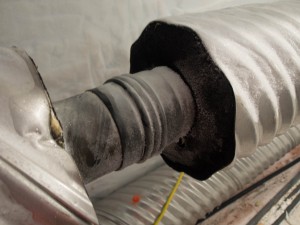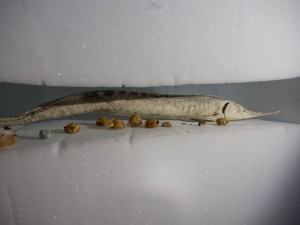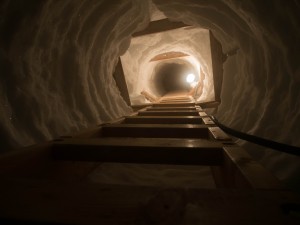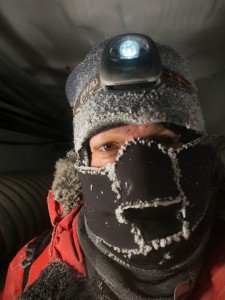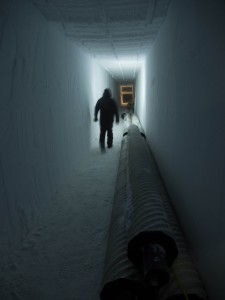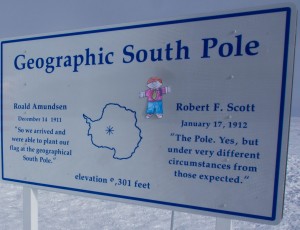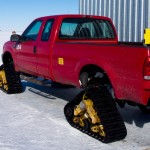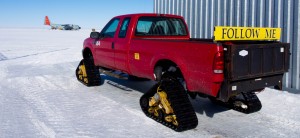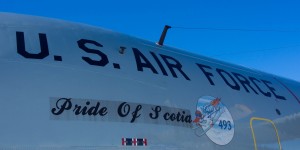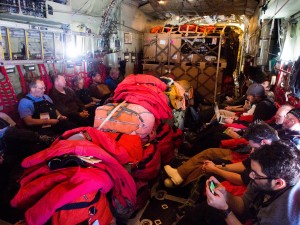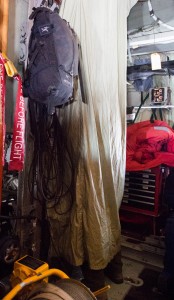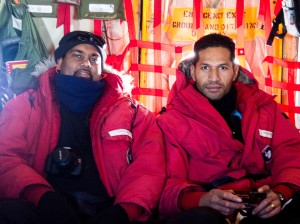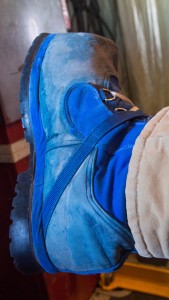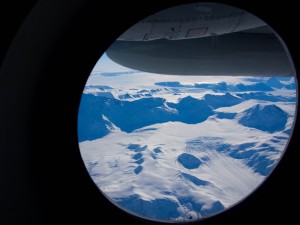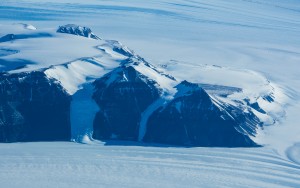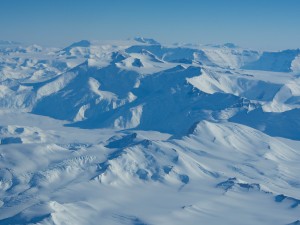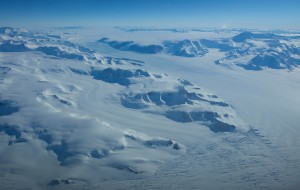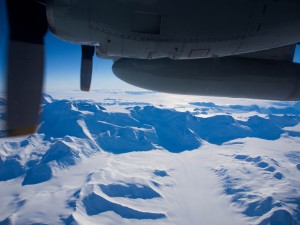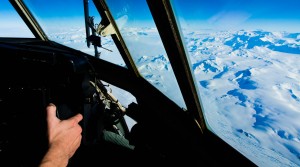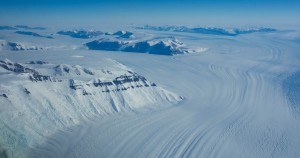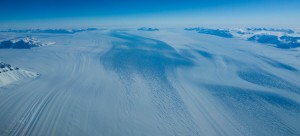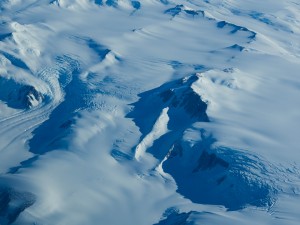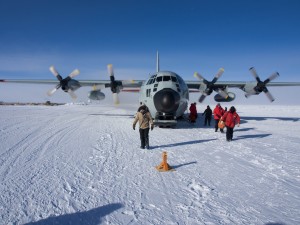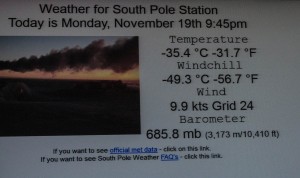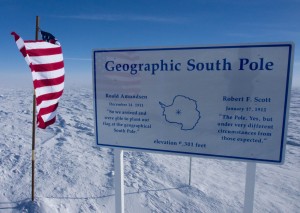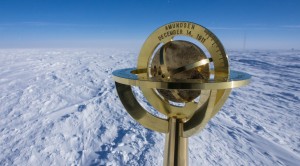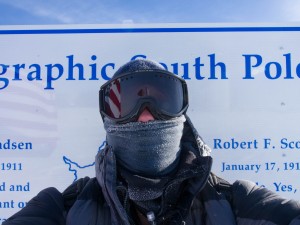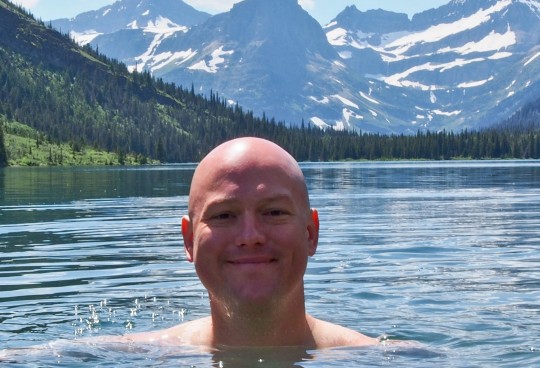Before 1911 no human had ever been to the South Pole.
While it is still pretty rare, I flew there in three hours on a C130.
The Amundsen Scott South Pole Station is the only permanent outpost of humanity for about 50,000 square miles.
Flat ice, 10,000 feet thick expands away from the station for what is essentially forever.
In summer the average high temperatures are -15F.
In winter the mercury has dropped as low as -116F.
The South Pole is often analogously compared to outer space.
Humans at the South Pole can’t live without substantial technological help.
Period.
We wear what is essentially a space suit and live in what certainly feels like a space station.
Somehow, with its ultra-bizarre surroundings the South Pole Station creates a strangely normal and pleasant environment.
The new station is an 80,000 square foot, two level building with entrances on both ends.
It is built on adjustable pole supports.
This design allows the station to be raised to keep drifting snow from encompassing the whole structure.
Destination Alpha functions as the main entrance.
When C130’s bring new arrivals they are ushered to this main entrance port.
As they enter, there is a display case with old South Pole elevation markers that have been used in past ceremonies
Further down the wall are three blown up newspaper pages.
They are the news stories from the most notable human feats in Antarctic history.
Roald Amundsen successfully leading the first group to the South Pole in December of 1911.
The tragic end to Robert Falcon Scott’s successful but ill-fated South Pole bid in January of 1912.
Lastly, Admiral Byrd’s first flight over the South Pole in 1929.
They were all gargantuan human and Antarctic accomplishments.
Scattered along the hallways are space station versions of many of the amenities you might visit in your town.
The Post Office is tucked into a cubby next to the store.
There are stamps that designate that your mail is being post marked from the South Pole.
The library shelves are lined with great fiction, world travel and South Pole reference books.
The workout room is filled with top end exercise equipment.
A round of cardio is quite the endeavor at 10,000’… or so they tell me.
There are weekly volleyball, soccer and exercise programs offered in the gym.
It also hosts the Southernmost New Year’s Eve party on earth!
Annually, employees called “Polies” put together bands and rock the New Year.
The band room is filled with instruments and gives people a quiet room to practice.
Luckily it is far away from anyone’s sleeping quarters as to not bother folks.
The most common place to spend time is the Galley.
The back wall’s windows look out at the ceremonial South Pole’s mirrored ball and international flags.
The food is quite wonderful for a place that gets almost no fresh food and is 1500 miles away from an unfrozen vegetable.
People hang out here chatting, playing games, watching Sunday science lectures and nibbling on cookies.
Day and night Bob, Andy and their crew spent most of their time in the science lab.
Countless hours were spent soldering electrical wires, testing various systems and drinking Mountain Dew late into the evening.
There are two movie rooms with comfortable couches and there are scheduled events.
Employees get into trends of watching a certain show once a week or schedule certain movies.
On Friday nights there is a football game shown, but it is a game from last week.
The Armed Forces Network has deal with the NFL.
They send us cd copies of the games and we return them when we are done.
For a serious sports nut it would be maddening to have to watch week old games.
Most of us are just excited to be able to watch a football game.
Many of the employees also hang out in the lounge.
Foosball, pool, dominos, backgammon and cribbage are played nightly.
The beauty of the South Pole is that everyone has to hang out together.
There is nowhere else to go.
So electricians hang out with firefighters, science grantees and dish washers.
It’s a great community to be a part of.
I feel very lucky to have had my moment.
24 Hours a day there is a dispatcher on duty at the South Pole.
They respond to any emergency and keep track of field camps and flight operations.
On the wall of the dispatch office is a map with all of the field camps, remote facilities and fuel caches.
I saw on a map that there is one fuel depot called Johnny Cache.
Pretty witty, huh?
The main point of interest at the station is the actual Geographic South Pole.
There’s a sign and a gold marker that claim the exact spot.
The marker and sign are moved every New Years.
This is done to accommodate for the ice sheet moving about 30 feet a year, while the pole stays put.
There is a ceremonial South Pole which is a decorative pole with a mirrored ball on top.
Surrounding the mirrored ball are flags from all the main countries that play heavy roles in the Antarctic research.
A “Hero Shot” is the term for a persons picture with the pole.
This is mine.
It made a great spot for GLACIEREXPLORER.COM and I to thank you for all the donations and support and wish you a Happy New Year!
It was like 3:30am the night before I was leaving.
I was dead tired, but I swear its so sincere!
I just wanted to tell you all how much I appreciate your support!!!
Anyway, back to the South Pole!
The power station makes this whole project possible.
The main entrance has been covered in snow and exists below the surface of the ice.
Near it is the Beer Can which is the utilitarian entrance to the station.
It’s the portal to a whole underground world that harbors all the utilities and much of the major storage.
The Beer Can has a spiral staircase leading more than 100 feet below the surface of the ice.
The stairwell can be raised to accommodate for the gradual raising of the surface ice.
The architects built malleable seals into the building so the chaotic shifting of the ice wouldn’t break a rigid station.
There’s a labyrinth of archways which meander under the ice to the generator room and cavernous storage.
The generators are by far the most important utility on station.
If the power goes out, everyone is done for!
No ifs, ands or buts.
To combat the cold there are three enormous Caterpillar 3512 generators that carry the bulk of the power.
They put out 1200 kw of max power and burn around 50 gallons of diesel per hour each.
There is one smaller Caterpillar 3406 referred to as the “peaker” for when energy use peaks now and then.
Water is a hot commodity at the South Pole.
It is rationed so stringently that everyone only gets two, 2 minute showers a week.
This is all very ironic since the station is built on top of two miles of ice.
Antarctica holds the bulk of the world’s fresh water, but it’s all frozen.
The area around the South Pole is actually a desert.
Any liquid water had to be melted which takes lots of power and plenty of ingenuity.
The waste heat from the generators is used to heat the station and plays a huge role in the water production.
In the past snow had to be dug up and put in a hopper to melt.
The new design uses Rod Well’s which are enormous bulbous caverns melted deep inside the snowpack.
Heated water is sprayed down a tunnel to melt the ice.
The melted water is extracted and pumped to the surface.
The cavern that is created is approximately 500 feet deep.
Then after they switch to a new Rod Well the old one is used to hold sewage.
The station is on to their third Rod Well.
There are T Shirts being made that say “Rod Well…If you aren’t drinking from #3, your drinking #1 and #2.
Pretty witty, huh?
The water is almost totally pure from lack of interaction with soil and minerals.
Nutrients and minerals are added to the water supply so it is healthy for human consumption.
Water, heat and all the other systems in the station exist entirely because of the power station though.
So, in these tunnels there is five years of extra fuel and there are seven years of extra food too.
There are ice tunnels that were carved under the surface and they access the Rod Wells.
The tunnels hover between -50F to -65F.
Running the length of the tunnels are the pipes pumping fresh water out of the Rod Wells.
There is another set of pipes that runs sewage back to the old Rod Wells.
Heated wire and insulation keep the water and sewage in a liquid state so it keeps moving.
There is also a sub culturally famous series of shrines throughout the tunnels.
One of the most famous is a Sturgeon that was given as a present from a Russian Icebreaker many years ago.
There is a long winded story but eventually it came to find a home in the depths of the ice tunnels.
2011 was the 100 year anniversary of Amundsen reaching the South Pole.
The celebration included a bust of Amundsen carved out of ice.
To keep it frozen, the bust was placed on a snow shelf in the walls of the tunnels.
My friend would shine his headlamp at the shrines so my camera would take photos in the dark tunnels.
Then he would have to stash the headlamp back in his pocket so the batteries wouldn’t die in the cold.
As a safety precaution there is escape hatches scattered throughout the length of the tunnels.
There are ladders leading directly up a tube etched out of the snow that would pop you out at the surface.
I’ve been to some pretty odd places in my life.
Tunnels carved out of ice below the surface of the South Pole might take the cake though.
Breath had frozen my entire balaclava to the point that I thought it might crack.
Down below was an alien world of dark snowy tunnels and slowly shifting ice.
Above was a good dinner, a game of pool and a warm bed.
Strange how all of those things can exist in one building.
It’s like the worlds weirdest basement.
Only at the South Pole.
Flat Stanley wanted me to tell you that he hopes you enjoyed the post and to have a great week.
He also said,
To Life!

